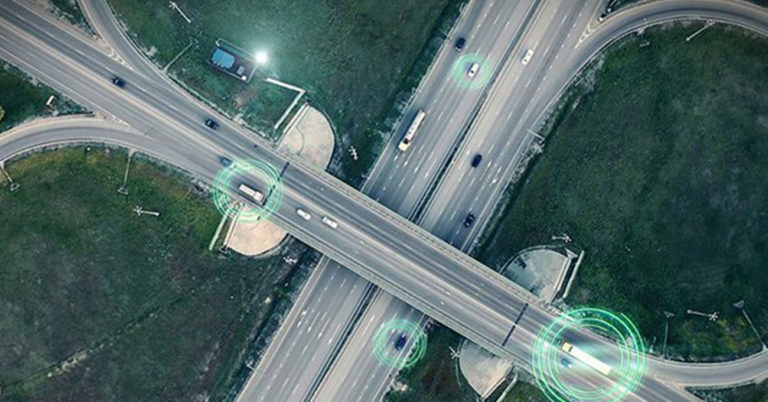Despite an initially slow start, 5G devices and networks are continuing to come out in increasing numbers every year.
In 2021, the global 5G infrastructure market was valued at $47.3 billion and is projected to reach a value of $1.67 trillion by 2030. Increasing investment, growing demand for reliable connectivity, and the steady rollout of new networks and partnerships are all acting as drivers for this market explosion.
Two particular developments that are leading this trend toward 5G adoption are worthy of mention: IoT in general and location-based services in particular. These technologies were among the first to take advantage of 5G and are already bringing strong investment returns for businesses that have adopted them.
The 5G standard
As you may know, 5G is the fifth generation of mobile connectivity. Compared to its 4G predecessor, 5G is up to ten times faster with speeds as high as 20 Gbps. It also has far greater reliability and little to no latency, meaning it rarely loses a connection and can transfer massive amounts of data with few delays. Another benefit is its ability to allow a large number of devices to connect at once, something that previous mobile generations struggled with.
Of course, not every business handles large amounts of data that require high speeds and little latency. So, 4G is likely to remain with us for a while longer, something that the designers of 5G understood by keeping the networks compatible with each other. But for those businesses that do handle large amounts of data, require a high level of accuracy, and can’t afford any lost connections, 5G has practically become a requirement.
5G and IoT
With greater connectivity comes the ability to record, transfer, and monitor vast amounts of data for easier cloud computing, automation, and machine learning. The number of businesses using IoT is expected to explode in the coming years: the number of IoT devices worldwide is projected to grow from 13.8 billion in 2021 to 30.9 billion by 2025.
However, unlocking the full potential of IoT will mean adopting a 5G-powered network. It’s simply not possible to handle the large amounts of data and connected devices generated by IoT on a 4G network. By contrast, a 5G-powered IoT network can allow for:
- Faster data transfer – The more quickly IoT devices can communicate with each other, the more efficient the IoT systems that they are connected to will be.
- Lower latency – Less delay between sending and receiving information is particularly important for IoT systems that oversee health, safety, and security procedures.
- Increased device capacity – The higher bandwidths of a 5G network allow for a large number of IoT devices to be connected, far more than could be connected on a 4G network.
- Improved network reliability – With 5G, networks have greater stability, meaning there’s less chance of connections being lost. This, again, is crucial with IoT systems used in health care or focused on workplace safety and security.
One downside to the increasing number of IoT devices is that the proliferation creates additional attack routes for hackers. This is something cybersecurity experts are working on by developing new security protocols specifically designed to deal with the almost exponential increase of network endpoints involved in an IoT system.
The relationship between 5G and IoT is a reciprocal one: as IoT becomes the norm for most businesses, it will increase the need for upgrading their network to 5G. As 5G becomes more common, it will increase the attraction of developing an IoT infrastructure.
5G and location-based services
One particularly promising IoT sector is location technology, which refers to systems that track assets and people in real time through a network of sending and receiving IoT devices. Location tech has been around for a few years using various existing technologies, such as GPS, Wi-Fi, and Bluetooth. However, most current location technologies have various drawbacks regarding accuracy, security, or scalability.
For instance, GPS uses a lot of power and doesn’t work effectively in indoor environments. Wi-Fi provides higher indoor accuracy, but its short range makes scalability challenging. There are also significant security issues with Wi-Fi, making it vulnerable to attacks.
A 5G-powered location network can overcome most of these challenges through its high bandwidth, reliable connectivity, and greater security. Location technology developers have taken notice of these benefits and have begun incorporating 5G capability into their Wi-Fi- or Bluetooth-driven devices. This opens up a world of possibilities by removing the constraints on existing devices while also dramatically boosting their capabilities.
With location-based technology having now become far more accurate and cost-effective, it is pushing many business managers to adopt 5G to enjoy the technology’s full benefits. Location-based services can also be incorporated with other IoT infrastructures for a fully connected workplace.
Final thoughts
With connectivity being at the heart of most business operations, 5G will have a major part to play, not just in the evolution of businesses, but also in the evolution of society as a whole. We are all moving towards a more interconnected world and 5G presents a faster and more efficient way for us to get there. While further adoption of IoT and location-based technologies are driving the expansion of 5G, they represent only the tip of the iceberg of what’s possible.
This article was originally published here
Did you know?
Quuppa is the leading RTLS platform for indoor positioning
LEARN MORE

